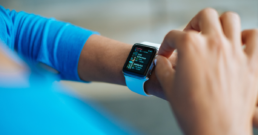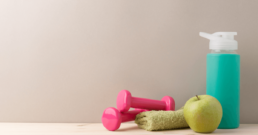Food Is Medicine
--> SIGN UP TO ATTEND <--
Join us as JA hosts our next Journey+ event featuring panelists from Preventia Group. This session will tackle the important conversation on the medicinal qualities of food and how food impacts your health.
During this session you will gain actionable insight on :
- - Defining how food is medicine
- - How to tackle this, together
- - The IMPACT of food
Walk away from this session with a deeper understanding and be ready to take action within your organization by joining us on May 18th at 10a ET.
COVID-19 and the Workplace
Highlights
- COVID-19
The illness caused by the coronavirus can cause symptoms ranging from mild to severe. Cases are expected to spread throughout the United States. - Disease Prevention
Employers must maintain a safe work environment for employees. They may require employees to stay home from work if they are at risk of spreading the disease. - Legal Obligations
Employers must also consider their obligations under workplace laws.
OVERVIEW
As the number of reported cases of the novel coronavirus (COVID-19) continues to rise, employers are increasingly confronted with the possibility of an outbreak in the workplace.
Employers are obligated to maintain a safe and healthy work environment for their employees, but are also subject to a number of legal requirements protecting workers. For example, employers must comply with the Occupational Safety and Health Act (OSH Act), Americans with Disabilities Act (ADA) and Family and Medical Leave Act (FMLA) in their approach to dealing with COVID-19.
This Compliance Bulletin provides a summary of the compliance issues facing employers in this type of situation.
ACTION STEPS
There are a number of steps that employers can take to address the impact of COVID-19 in the workplace. In addition to reviewing the compliance concerns outlined in this Compliance Bulletin, employers should:
- Closely monitor the CDC, WHO and state and local public health department websites for information on the status of the coronavirus.
- Proactively educate their employees on what is known about the virus, including its transmission and prevention.
- Establish a written communicable illness policy and response plan that covers communicable diseases readily transmitted in the workplace.
- Consider measures that can help prevent the spread of illness, such as allowing employees flexible work options like working from home.
What is the Coronavirus?
The 2019 novel coronavirus (“COVID-19” or “coronavirus”) is caused by a member of the coronavirus family that is a close cousin to the SARS and MERS viruses that have caused outbreaks in the past. Symptoms of COVID-19 include fever, runny nose, cough and trouble breathing. Most people develop only mild symptoms. But some, usually people with other medical complications, develop more severe symptoms, including pneumonia, which can be fatal. The incubation period for COVID-19 is from two to 14 days.
Initially detected in Wuhan, China in late 2019, the first case of COVID-19 in the United States was reported on January 21, 2020. Since then, the disease has spread to more than 50 people within the continental United States, with CDC officials warning of further outbreaks.
How is Coronavirus Spread?
The available information about how the virus that causes COVID-19 spreads is largely based on what is known about similar coronaviruses. COVID-19 is a new disease and there is more to learn about its transmission, the severity of illness it causes, and to what extent it may spread in the United States.
According to the CDC, the virus is thought to spread mainly from person to person, between people who are in close contact with one another (within about six feet) or through respiratory droplets produced when an infected person coughs or sneezes. These droplets can land in the mouths or noses of people who are nearby, or possibly be inhaled into the lungs. It may also be possible for a person to contract COVID-19 by touching a surface or object that has been contaminated with the virus and then touching his or her own mouth, nose, or eyes, but this is not thought to be the main way the virus spreads.
People are thought to be most contagious when they are most symptomatic. Some spread might be possible before people show symptoms, and there have been reports of this occurring, but this is not thought to be the main way the virus spreads.
Occupational Safety and Health Act of 1970
Under the federal Occupational Safety and Health Act of 1970 (the OSH Act), employers have a general duty to provide employees with safe workplace conditions that are “free from recognized hazards that are causing or are likely to cause death or serious physical harm.” Workers also have the right to receive information and training about workplace hazards, and to exercise their rights as employees without retaliation.
There is no specific Occupational Safety and Health Administration (OSHA) standard covering COVID19. However, some OSHA requirements may apply to preventing occupational exposure to COVID-19. In addition to the General Duty clause, OSHA’s Personal Protective Equipment (PPE) standards and Bloodborne Pathogens standard may apply to certain workplaces, such as those in the healthcare industry.
Employers should continue to monitor the development of COVID-19 and analyze whether employees could be at risk of exposure. It is also important for employers to consider what preventative measures they can take to maintain safety and protect their employees from potentially contracting COVID-19.
Also, OSHA requires many employers to record certain work-related injuries and illnesses on their OSHA Form 300 (OSHA Log of Work-Related Injuries and Illnesses). OSHA has determined that COVID19 is a recordable illness when a worker is infected on the job. Establishments that are required to complete an OSHA 300 log should be sure to include all COVID-19 infections that are work related.
The Americans with Disabilities Act
The Americans with Disabilities Act (“ADA”) protects applicants and employees from disability discrimination. It is relevant to COVID-19 because it prohibits employee disability-related inquiries or medical examinations unless:
- They are job related and consistent with business necessity; or
- The employer has a reasonable belief that the employee poses a direct threat to the health or safety of him-or herself or others (i.e., a significant risk of substantial harm even with reasonable accommodation).
According to the Equal Employment Opportunity Commission (EEOC), whether a particular outbreak rises to the level of a “direct threat” depends on the severity of the illness. Employers are expected to make their best efforts to obtain public health advice that is contemporaneous and appropriate for their location, and to make reasonable assessments of conditions in their workplace based on this information.
The EEOC has said that sending an employee home who displays symptoms of contagious illness would not violate the ADA’s restrictions on disability-related actions because advising such workers to go home is not a disability-related action if the illness ends up being mild, such as a seasonal influenza. On the other hand, if the illness were serious enough, the action would be permitted under the ADA as the illness would pose a “direct threat.” In either case, an employer may send employees home, or allow employees to work from home, if they are displaying symptoms of contagious illness.
The ADA requires that information about the medical condition or history of an employee, obtained through disability-related inquiries or medical examination, be collected and maintained on separate forms and in separate medical files and treated as a confidential medical record. Employers should refrain from announcing to employees that a coworker is at risk of or actually has a disease. Instead, employers should focus on educating employees on best practices for illness prevention.
Employee Leave Requirements
If an employee, or an employee’s family member, contracts COVID-19, the employee may be entitled to time off from work under federal or state leave laws. For example, an employee who is experiencing a serious health condition or who requires time to care for a family member with such a condition may be entitled to take leave under the Family and Medical Leave Act (FMLA). An illness like COVID-19 may qualify as a serious health condition under the FMLA if it involves inpatient care or continuing treatment by a health care provider. Employees may also be entitled to FMLA leave when taking time off for medical examinations to determine whether a serious health condition exists.
Many states and localities also have employee leave laws that could apply in a situation where the employee or family member contracts COVID-19. Some of these laws require employees to be given paid time off, while other laws require unpaid leave. Employers should become familiar with the laws in their jurisdiction to ensure that they are compliant. Some employees may wish to stay home from work out of fear of becoming ill. Whether employers must accommodate these requests will depend on whether there is evidence that the employee may be at risk of contracting the disease. A refusal to work may violate an employer’s attendance policy, but employers should consult with legal counsel prior to disciplining such an employee. However, if there is no reasonable basis to believe that the employee will be exposed to the illness at work, the employee may not have to be paid for any time that is missed.
Communicating with Employees
As part of their efforts to prevent the spread of COVID-19 in the workplace, employers should consider communicating information about the illness to employees. The CDC, WHO and OSHA have all created informational material on the virus and its symptoms, prevention and treatment that can be helpful for employees.
Legislative compliance can be burdensome without the right partner.
JA delivers confidence and clarity in compliance through our on-staff expertise accompanied by a vast selection of resources.
Compensation and Benefits
If employees miss work due to COVID-19, whether they are compensated for their time off will depend on the circumstances. As noted above, employees may be entitled to paid time off under certain state laws if they (or a family member) contract the illness. In other cases, non-exempt employees generally do not have to be paid for time they are not working. Exempt employees must be paid if they work for part of a workweek, but do not have to be paid if they are off work for the entire week. Note that special rules may apply to union employees, depending on the terms of their collective bargaining agreement.
Employees may be entitled to workers’ compensation benefits if they contract the disease during the course of their employment. For example, employees in the healthcare industry may contract the disease from a patient who is ill. Whether an employee is eligible for other benefits, such as short-term disability benefits, will depend on the terms of the policy and the severity of the employee’s illness.
Use our provided resources to stay informed with updated compliance guidelines and regulations - courtesy of JA BENEFITS.

Daily Use of This Supplement May Help Lower Heart Disease Risk
Daily Use of This Supplement May Help Lower Heart Disease Risk
According to a team from Harvard’s School of Public Health, daily use of omega-3 fish oil supplements may help you bolster your heart health. The team reviewed data from 13 different studies and found that consuming about 840 milligrams of omega-3 fish oil per day was linked to a lower overall risk of dying from heart disease.
In addition to taking omega-3 fish oil capsules daily, the team recommends focusing on living a healthy lifestyle to keep heart disease at bay. A healthy lifestyle includes maintaining a healthy weight, getting enough exercise, avoiding tobacco and alcohol consumption, and eating a well-balanced diet.
For more information about your personal risk of heart disease or lifestyle changes that you can make to lower your risk, contact your doctor.

According to U.S. Consumer Product Safety Commission estimates, there were 14,700 holiday decorating-related injuries treated in the ER last season.

Nutritional Information (per serving)
| Total Calories | 234 |
| Total Fat | 6 g |
| Protein | 9 g |
| Carbohydrates | 41 g |
| Dietary Fiber | 9 g |
| Saturated Fat | 1 g |
| Sodium | 167 mg |
| Total Sugars | 10 g |
Source: USDA
Curried Squash Stew
Ingredients
- 1 Tbsp. vegetable oil
- 1 yellow onion (chopped)
- 2 cloves garlic (minced)
- 1 celery stalk (chopped)
- ½ tsp. ground cinnamon
- 1 large zucchini (chopped)
- 2 Tbsp. curry powder
- 3 cups butternut squash (chopped)
- 1 14.5-ounce can low-sodium tomatoes (diced)
- 1 14.5-ounce can low-sodium chickpeas (drained, rinsed)
Preparations
- Heat a large pot on the stove over medium heat and add oil. Add the onion, garlic and celery, and cook about 10 minutes, until the onion is tender.
- Add zucchini and curry powder and cook for 10 minutes, stirring occasionally.
- Add the butternut squash, tomatoes and chickpeas, and cover. Continue cooking for about 10 minutes.
- Serve with cooked brown rice.
Makes: 4 servings
For more information and helpful links, please download our December 2019 Live Well, Work Well Newsletter.
This article is intended for informational purposes only and is not intended to be exhaustive, nor should any discussion or opinions be construed as professional advice. Readers should contact a health professional for appropriate advice.
Stay Safe While Decking the Halls
Stay Safe While Decking the Halls
Although decorative lights are great for getting your home ready for the holidays, they can also present a safety risk if they aren’t displayed and maintained properly. Here are a few things to keep in mind to ensure that your home is safe during the holidays:
- When you’re buying decorations, always check to see if the product has a label that indicates that it has been independently tested by an organization like Underwriters Laboratories.
- Inspect all lights before you use them. If you notice any damaged cords or plugs, discard those lights immediately. Also, if you need to replace any bulbs, make sure that the lights are unplugged first.
- Use a ladder made of nonconductive materials when you hang lights outside to reduce the risk of electrocution.
- Check to see if your lights were designed for indoor or outdoor use. Although most decorative lights have basic waterproofing, indoor lights can present a serious risk of electrocution or fire if they’re used outside.

According to U.S. Consumer Product Safety Commission estimates, there were 14,700 holiday decorating-related injuries treated in the ER last season.

Nutritional Information (per serving)
| Total Calories | 234 |
| Total Fat | 6 g |
| Protein | 9 g |
| Carbohydrates | 41 g |
| Dietary Fiber | 9 g |
| Saturated Fat | 1 g |
| Sodium | 167 mg |
| Total Sugars | 10 g |
Source: USDA
Curried Squash Stew
Ingredients
- 1 Tbsp. vegetable oil
- 1 yellow onion (chopped)
- 2 cloves garlic (minced)
- 1 celery stalk (chopped)
- ½ tsp. ground cinnamon
- 1 large zucchini (chopped)
- 2 Tbsp. curry powder
- 3 cups butternut squash (chopped)
- 1 14.5-ounce can low-sodium tomatoes (diced)
- 1 14.5-ounce can low-sodium chickpeas (drained, rinsed)
Preparations
- Heat a large pot on the stove over medium heat and add oil. Add the onion, garlic and celery, and cook about 10 minutes, until the onion is tender.
- Add zucchini and curry powder and cook for 10 minutes, stirring occasionally.
- Add the butternut squash, tomatoes and chickpeas, and cover. Continue cooking for about 10 minutes.
- Serve with cooked brown rice.
Makes: 4 servings
For more information and helpful links, please download our December 2019 Live Well, Work Well Newsletter.
This article is intended for informational purposes only and is not intended to be exhaustive, nor should any discussion or opinions be construed as professional advice. Readers should contact a health professional for appropriate advice.
Tips for Sticking to Your Diet During the Holidays
Tips for Sticking to Your Diet During the Holidays
The holidays bring to mind thoughts of family, friends, fun and food. However, each year, millions of Americans struggle to maintain their waistlines during the holidays while surrounded by tempting holiday treats.
With so many social gatherings during this time, it can be difficult to avoid treating yourself when you’re offered good food and drinks. Whether you’re dieting or just trying to maintain your healthy lifestyle, fear not—you can survive the holidays and wake up on Jan. 1 without feeling remorse or guilt. Consider the following tips:
- Don’t go to a party hungry—Eat before attending a party so you don’t arrive on an empty stomach and devour everything in sight.
- Eat slowly—Be mindful of every chew. It takes your body 20 minutes to realize when it’s full.
- Pace yourself when drinking—Alcohol can be dangerous at holiday parties, as overindulgence cannot only cause embarrassment, but also pack on the pounds.

- Make socializing your top priority—If you’re distracted with conversation, you’ll be occupied and less likely to indulge in food or drinks.
- Don’t feel pressured to eat leftovers—If you have an abundance of leftovers after hosting a party, don’t feel like you have to eat them just because you don’t want them to go to waste.
- Practice self-control—For example, allow yourself one plate of food at a party, and promise yourself that you won’t go back for seconds.
According to U.S. Consumer Product Safety Commission estimates, there were 14,700 holiday decorating-related injuries treated in the ER last season.

Nutritional Information (per serving)
| Total Calories | 234 |
| Total Fat | 6 g |
| Protein | 9 g |
| Carbohydrates | 41 g |
| Dietary Fiber | 9 g |
| Saturated Fat | 1 g |
| Sodium | 167 mg |
| Total Sugars | 10 g |
Source: USDA
Curried Squash Stew
Ingredients
- 1 Tbsp. vegetable oil
- 1 yellow onion (chopped)
- 2 cloves garlic (minced)
- 1 celery stalk (chopped)
- ½ tsp. ground cinnamon
- 1 large zucchini (chopped)
- 2 Tbsp. curry powder
- 3 cups butternut squash (chopped)
- 1 14.5-ounce can low-sodium tomatoes (diced)
- 1 14.5-ounce can low-sodium chickpeas (drained, rinsed)
Preparations
- Heat a large pot on the stove over medium heat and add oil. Add the onion, garlic and celery, and cook about 10 minutes, until the onion is tender.
- Add zucchini and curry powder and cook for 10 minutes, stirring occasionally.
- Add the butternut squash, tomatoes and chickpeas, and cover. Continue cooking for about 10 minutes.
- Serve with cooked brown rice.
Makes: 4 servings
For more information and helpful links, please download our December 2019 Live Well, Work Well Newsletter.
This article is intended for informational purposes only and is not intended to be exhaustive, nor should any discussion or opinions be construed as professional advice. Readers should contact a health professional for appropriate advice.
Working on Wellness: 5 Tips to Help You Prioritize Your Health
Is your personal wellness top priority? When it comes to personal wellness, it doesn't have to be one or the other when choosing health versus work. Read the following blog post for five tips on prioritizing personal health and wellness.
Wellness is such a buzzword these days. It seems like everyone is talking about it, and with good reason. Taking care of yourself needs to be a top priority in your life, but that doesn’t mean it's easy. I know that you may feel stressed and overwhelmed with work, family, friends, or other commitments, but at the end of the day, your health should be your most prized commodity. Most people understand the importance of caring for their health, but cite numerous reasons why they just don’t have the time – namely, work. However, it doesn’t have to be one or the other. You can prioritize your well-being and succeed in the office. In fact, my theory is that an individual's personal wellness must be a top priority in order to achieve one's major corporate goals. Not only do I teach this method, but I live it too. Every. Single. Day.
Here are my 5 tips that will help you prioritize your health while thriving in the corporate world.
Find Your Passion
Deciding that you are going to start focusing on wellness is usually not difficult. However, when you are dreading the time you have set aside to go to the gym, that’s when it gets hard. It’s challenging to motivate yourself to do an activity that you despise doing, and it's even harder to keep it up. This is why it is important to find a task that you enjoy doing within the realm of wellness possibilities. Do you like lifting weights or doing aerobic exercises? Maybe swimming, yoga, or hiking is a better fit for you. There are a multitude of possibilities and something for everyone.
Personally, I’m a runner. I participate in ongoing marathons and IRONMAN 70.3 competitions across the globe. Over the next few months, I will embark on several major races. In September, I will be running a Marathon in Capetown, South Africa. The following month, I am going back for my second year of running 55 Miles through the Serengeti in Africa. To keep the momentum going, in November, I will be running in the TCS New York City Marathon. And then in December, I will be completing an IRONMAN 70.3 Cartagena in Colombia. I did not always compete in these types of races, but I worked up to it through rigorous training sessions. Embracing the open terrain while enjoying some time alone with my thoughts as I run is incredible.
Be Mindful of Your Time
The best advice I can give to those who worry that they don’t have enough time to exercise is to be aware of how you are using your time. Are you using your time efficiently to the fullest potential? Is there anything you can cut or shorten the time you devote to? Get creative. For example, I actually develop many of my business strategies while working out. I am able to let my mind ruminate about work while my body focuses on my wellness. Make time to move. Even if it’s just a little bit every day. Try taking a ten-minute break and going on a walk. Afterward, you’ll feel great and will probably be more productive too. The email can wait; your health cannot.
Follow a Routine
Consciously making the effort to prioritize your wellness isn’t always easy. This is why it is important to follow your routine. Stopping for even a few days makes it hard to get back into it again, and restarting again after a break is always the hardest part. On the other hand, sticking to a routine helps working out feel natural. It becomes a part of your day, an activity that happens somewhere in between waking up in the morning and falling asleep at night. Schedule your fitness into your calendar. If it’s on the calendar, it is real – just like that phone call or meeting you have scheduled after your workout. Setting aside time for your health is like making a promise to yourself to care about your well-being. Honor that promise.
Transfer Your Skills
It’s important to remember that working out is not just good for your body. Exercise also helps develop valuable skills that you can transfer to the workplace. I have completed many races this year, all of which help me to stay focused in my personal life and in the office. Following a schedule and setting goals when training and competing fosters an organized and centered mind when I am at work. I can focus on what I want to execute and achieve. The cadence of training is very similar to the way that I operate in the corporate landscape. Similarly, I attribute many of my most prized leadership qualities – including motivation, perseverance, and a stellar ability to navigate the daily struggle of balance – to an active and healthy lifestyle that is the impetus for day-to-day accomplishment. I first learned how to motivate myself to prioritize my well-being and how to persevere when training becomes a challenge. I worked to find a balance that fits my lifestyle. Then I was able to transfer those skills that I learned to helping others. After all, if you cannot take care of yourself, you cannot take care of your team.
Reward Yourself
Choose a fitness goal and obtain it, whether it's running a 5K or something completely different. Every time you train, you'll become stronger. Then, reward yourself when you make progress, whether it’s with a new outfit, new running shoes, or a pedicure that you have been dying to have. You worked hard for a goal and accomplished it, so treat yourself! Likewise, don’t forget the little victories. Be proud of yourself for training each day and be content with what you achieved. You are setting yourself up to be a happier and healthier you—and that is no small thing. This translates to the business side of things as well, the sense of completion.
Prioritizing your health may seem like something that is out of reach for you, simply because it just doesn’t fit into your schedule. But that’s not necessarily the case. If you have the right mindset going in and make a conscious effort, you can focus on both your wellness and corporate life. And you'll be thankful you did!
SOURCE: Vetere, R. (Accessed 1 November 2019) "Working on Wellness: 5 Tips to Help You Prioritize Your Health" (Web Blog Post). Retrieved from https://www.corporatewellnessmagazine.com/article/five-tips-to-prioritize-health
Employers look to virtual services to curb rising health costs
According to the National Business Group on Health, 64 percent of employers believe virtual care will play a significant role in healthcare delivery. Employers are looking for ways to stem the rising costs of healthcare and find ways to better engage employees. Continue reading this blog post to learn more about virtual services.
WASHINGTON — With the continued cost of healthcare benefits expected to increase by another 5%, topping $15,000 per employee, employers are looking for ways to stem the increase and better engage employees in holistic well-being.
One of those ways is through virtual care. The number of employers who believe virtual care will play a significant role in how healthcare is delivered in the future continues to grow, up to 64% going into 2020 from 52% in 2019, according to the National Business Group on Health’s annual healthcare strategy survey.
“Virtual care solutions bring healthcare to the consumer rather than the consumer to healthcare,” Brian Marcotte, president and CEO of NBGH said at a press briefing Tuesday. “They continue to gain momentum as employers seek different ways to deliver cost-effective, quality healthcare while improving access and the consumer experience. Of particular note is the growing interest among employers to offer virtual care for mental health as well as musculoskeletal conditions.”
The majority of respondents (51%) will offer more virtual care programs next year, according to the survey. Nearly all employers will offer telehealth for minor, acute services while 82% will offer virtual mental health services — a figure that’s expected to grow to 95% by 2022.
Virtual care for musculoskeletal management shows the greatest potential for growth, the study noted. While 23% of employers will offer musculoskeletal management virtual services next year, another 38% are considering it by 2022. Physical therapy is the best way to address musculoskeletal conditions and help avoid surgery, but it can be inconvenient and costly, said Ellen Kelsay, chief strategy officer at NBGH.
“Where we’ve seen a lot of development in areas of virtual solutions is to provide remote physical therapy treatments,” she said. “Employees can access treatment through their virtual app wherever it’s convenient for them.”
Regardless, employee utilization of virtual services still remains low. For example, while roughly 70% of large companies provide telemedicine coverage, only 3% of employees use it,according to prior NBGH data.
But many resources are out of sight and out of mind, Kelsay said. However, employers are focusing on offering high-touch concierge services to help workers better navigate the healthcare system.
Employers are reaching a point of saturation with the number of solutions that are available, but from the employee’s perspective, they just don’t know where to start, she added. “These concierge and navigator services really help point employees in the direction to the solution at the point in time they need it.”
In addition, the use of predictive analytics and claims data is also an opportunity to help employers get the right programs in front of employees in the moment, Marcotte added.
“Some of these engagement platforms are getting at personal messaging and predictive analytics. It’s not where we want it to be yet, but as that continues to get better, I think you’ll see utilization go up,” he said.
Source: Otto, N. (13 August 2019) "Employers look to virtual Services to curb rising health costs" (Web Blog Post). Retrieved from https://www.benefitnews.com/news/employers-look-to-virtual-services-to-curb-rising-healthcare-costs
Getting Outside May Be the Key to Boosting Your Physical and Psychological Well-being
Getting Outside May Be the Key to Boosting Your Physical and Psychological Well-being
A recent study published in Scientific Reports revealed that spending 120 minutes a week outdoors can improve your health and psychological well-being. Remember, well-being refers to feeling good and living both safely and healthily. And, the concept of well-being can have implications on your overall quality of life, health and happiness.
What are the benefits of spending time outside?
Exercising in nature has been proven to improve one’s mental and physical health. Being outside also helps to promote higher vitamin D levels, a vitamin the body makes when skin is directly exposed to the sun. Many people are deficient in vitamin D, so exercising outside can be a great way to correct that.

In addition, outdoor activity can help you maintain a healthy weight, boost immunity and lower stress. Exercising outside can feel less routine than working out in a gym.
What counts as spending time outdoors?
Visiting town parks, greenspaces, woodlands and beaches all count as spending time outdoors. Here are two simple activities that you can do outside:
- Walking or hiking—Hiking and walking have been proven to improve heart health and can help you maintain a healthy waistline.
- Riding your bike—Riding a bike helps improve balance and endurance, and it’s an exercise that’s easy on your joints.
Be Prepared
Before you head outside and start improving your health today, you need to make sure that you’re properly prepared. This means that you should pack water, first-aid supplies, sun protection and, if you’re spending a significant amount of time outside, a healthy snack to help you refuel.
A Handy Guide to Portion Control
A serving of protein should be the size of the palm of your hand.
A serving of carbs should be the size of your fist.
A serving of vegetables should be the size of an open hand.

Nutritional Information (per serving)
| Total Calories | 290 |
| Total Fat | 15 g |
| Protein | 19 g |
| Carbohydrates | 19 g |
| Dietary Fiber | 3 g |
| Saturated Fat | 5 g |
| Sodium | 540 mg |
| Total Sugars | 4 g |
Source: USDA
Potato and Ham Skillet With Eggs
Ingredients
- 2 potatoes (peeled and diced)
- 2 Tbsp. vegetable oil
- 2 onions (small, chopped)
- 1 green pepper (chopped)
- 6 eggs (beaten)
- ¼ tsp. black pepper
- 6 ounces frozen ham (thawed and chopped, about 1 cup)
- 1 cup reduced-fat cheddar cheese (shredded)
Preparations
- In a medium-size skillet, cook potatoes in oil over medium heat until just soft, about 5 to 10 minutes.
- Stir in onion, green peppers and ham, and cook 5 minutes.
- Pour eggs and black pepper over potato mixture in pan, and sprinkle with cheese.
- Cook for 5 minutes, stirring occasionally, or until eggs are firm and cheese is melted.
Makes: 6 servings
For more information and helpful links, please download our September 2019 Live Well, Work Well Newsletter.
This article is intended for informational purposes only and is not intended to be exhaustive, nor should any discussion or opinions be construed as professional advice. Readers should contact a health professional for appropriate advice.
Your Heart Rate: Indicator for Health and Fitness
Your Heart Rate: Indicator for Health and Fitness
You’ve probably noticed that your wearable fitness technology is monitoring your heart rate—but have you ever wondered why? There’s a direct relationship between your heart rate and your workout’s intensity.
Resting Heart Rate
As the name suggests, your resting heart rate is the number of times your heart beats per minute (bpm). While your resting heart rate can vary daily, the typical range is 60-100 bpm. Improving your cardiovascular health can reduce your resting heart rate.
Heart Rate and Exercise
When you’re working out, you should strive to keep your heart rate within a target heart rate zone. This target heart rate zone is 50%-85% of your maximum heart rate. To calculate your maximum heart rate, subtract your age from 220. From there, you can find out your target heart rate numbers by multiplying your maximum heart rate by your target heart rate percentage. Once you’ve calculated your maximum and target heart rates, you can use these numbers to monitor your workout’s intensity and track your fitness.

Heart Rate Zones
Threshold Zone – 80% – 90%
Aerobic Zone – 70%- 80%
Endurance Zone – 60%- 70%
Recovery Zone – 50%- 60%

Nutritional Information (per serving)
| Total Calories | 62 |
| Total Fat | 0 g |
| Protein | 1 g |
| Carbohydrates | 15 g |
| Dietary Fiber | 1 g |
| Saturated Fat | 0 g |
| Sodium | 22 mg |
| Total Sugars | 15 g |
Source: USDA
Fruit Slush
Ingredients
- 2 ⅔ cups cantaloupe or watermelon (coarsely chopped, peeled, seeded)
- 1 ⅔ cups kiwi (peeled, chopped)
- 2 Tbsp. sugar
- 2 Tbsp. lime juice
- 2 cups water
- Ice
Preparations
- In a blender, puree fruit with sugar and lime juice until smooth.
- Combine fruit mixture and water in a large pitcher.
- If desired, pour through a strainer to eliminate pulp.
- Cover and refrigerate for up to a week.
- To serve, stir well and pour into tall glasses over ice.
Makes: 4 servings
This article is intended for informational purposes only and is not intended to be exhaustive, nor should any discussion or opinions be construed as professional advice. Readers should contact a health professional for appropriate advice.
1 in 5 Deaths Worldwide Associated With Poor Diets
1 in 5 Deaths Worldwide Associated With Poor Diets
According to a recently published study, 11 million deaths in 2017 were attributable to dietary risk factors. That total number translates to one-fifth of the world’s total deaths. The study defines dietary risk factors and poor diets as ones that are heavy in sugar, salt and trans fats.
While this study reveals startling numbers, it’s a well-known fact that eating healthy can help reduce your risk of developing chronic conditions like heart disease or Type 2 diabetes. By keeping such conditions at bay, you can maintain your overall health and be well on your way to living a long, healthy life.
Here are some tips to help you start eating healthier:
- Balance your plate with a variety of foods. Your plate should be 50% fruits and vegetables, 25% lean meat, poultry or fish, and 25% grains.

- Get a personalized eating plan. Speak with your doctor to develop a plan that will give you the amounts of each food group you need daily. Your doctor may recommend you seek out a registered dietician or nutritionist to create the best plan for you.
- Beware of sweetened drinks. Sodas and sports drinks are high in calories and sugars or sugar substitutes. Whenever possible, choose water over these drinks.
- Read food labels carefully. Make sure to always read nutrition labels to find out how healthy a particular food may be. It’s also important to check the ingredient list, which is different from the nutritional label.
For more information on how you can improve or maintain a healthy diet, contact your doctor.
Heart Rate Zones
Threshold Zone – 80% – 90%
Aerobic Zone – 70%- 80%
Endurance Zone – 60%- 70%
Recovery Zone – 50%- 60%

Nutritional Information (per serving)
| Total Calories | 62 |
| Total Fat | 0 g |
| Protein | 1 g |
| Carbohydrates | 15 g |
| Dietary Fiber | 1 g |
| Saturated Fat | 0 g |
| Sodium | 22 mg |
| Total Sugars | 15 g |
Source: USDA
Fruit Slush
Ingredients
- 2 ⅔ cups cantaloupe or watermelon (coarsely chopped, peeled, seeded)
- 1 ⅔ cups kiwi (peeled, chopped)
- 2 Tbsp. sugar
- 2 Tbsp. lime juice
- 2 cups water
- Ice
Preparations
- In a blender, puree fruit with sugar and lime juice until smooth.
- Combine fruit mixture and water in a large pitcher.
- If desired, pour through a strainer to eliminate pulp.
- Cover and refrigerate for up to a week.
- To serve, stir well and pour into tall glasses over ice.
Makes: 4 servings
This article is intended for informational purposes only and is not intended to be exhaustive, nor should any discussion or opinions be construed as professional advice. Readers should contact a health professional for appropriate advice.












